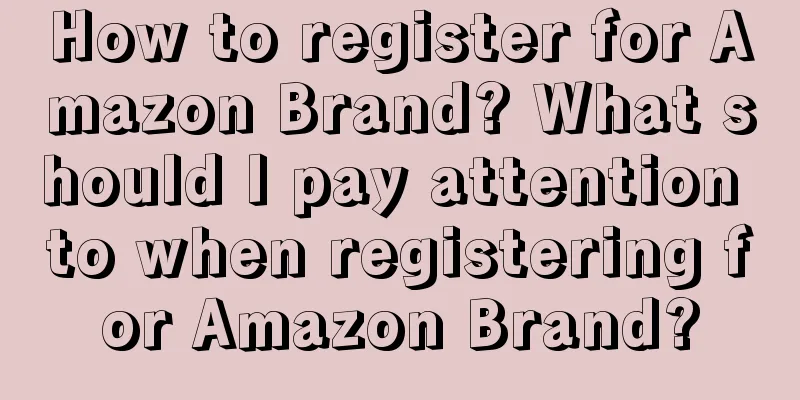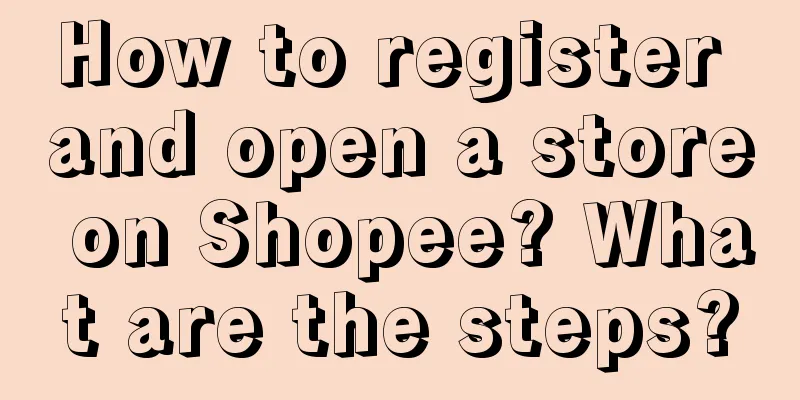In the next five years, brands need to both cultivate fish ponds and become sea kings

In the era of great changes in marketing, what should brands do across the board? Today I will continue to tell you about the sequel. I mentioned in my previous two articles that the past was an era of growth, where categories were king, but now is an era of stock, where people are king. The era of crowds, to put it bluntly, is the era of grabbing heads. The underlying logic of consumer goods has become: brand business scale = crowd mind penetration x crowd LTV x crowd fission rate. To attract customers, it is not just about getting them in and making a deal, but about focusing on refined crowd management. In the past, we talked about the process from awareness to purchase, and later we added repeat purchases and recommendations, so that people who love you love you even more. How to do crowd operation? I wrote an article before, "2019 Brand-Effect Integration Guide.pdf", saying: Building a brand is like raising fish, and creating effects is like fishing. To achieve brand-effect integration, you must raise fish and fish at the same time. Now it is 2025, the incremental growth has turned into stock, and the few fish in the pond are no longer enough for the brands to catch. So I put forward a new point of view: What is the essence of people-oriented global growth in the era of stock? A brand must be able to manage the fish pond on one hand and be a Neptune on the other. On the one hand, they are creating dividends, while on the other hand, they are building barriers. In the long run, brand operators must be able to maintain a good reputation, retain members, build long-term user assets and brand barriers, and continue to create value for the brand. In the short term, brands must be able to use the logic of "Neptune", utilize these members, and continuously attract "qualified" people to ensure transactions, ensure that the brand has fresh water introduced, and have effective behavior. Only when there are short-term dividends and long-term barriers can a brand be both stable and adaptable. In other words, brands need to care about three things: whether the fish are well-raised and whether the pond for catching fish is accurate enough. More importantly, can these two links be linked to form a circular ecosystem and improve efficiency? 01 In the stock era, fish ponds are the key among the keysAs for the market’s incremental turnover, one thing all brand people have in common is that the cost of acquiring customers is getting higher and higher. I once joked that as long as you dare to add enough qualifiers in front of your brand name, you will definitely become the top one in the field. Indeed, the Chinese market is so large that even if it is segmented and subdivided again, it is always enough to support a brand. However, any cut will inevitably lead to a smaller overall user pool. The current platform's traffic dividend is already small, and competitors are constantly entering the market to grab traffic. Many are still using the idea of massive investment to attract new users. I pay 50 cents and you pay 1 yuan, so the cost is raised higher and higher. Another consensus in the existing market is that category logic is ineffective, the values between circles are becoming increasingly different, and the key to competition has shifted from competing in categories to competing in groups of people. In the past we said that we would drink Wanglaoji when we had a sore throat, but now everyone has their own drinks that reduce heat. Why should I drink Wanglaoji? The term "occupying the mind" is too old-fashioned. The relationship between brands and users is no longer one of occupation and being occupied. In the era of user sovereignty, brainwashing marketing is ineffective. To make yourself chosen, the key is to win the hearts of users, naturally integrate into their lives, and subtly become an important role in life scenes. The scale of brand business in the incremental era = category penetration rate * channel penetration rate * sales momentum. The scale of brand business in the inventory era = population mind penetration rate x population LTV x population fission rate. It can be seen from these two formulas that what brands must do in the era of inventory is to carry out refined operations, which is to "raise fish ponds" - extend LTV (total life cycle value) in operations and improve NPS (net promoter score) in branding. Many brands have already taken the lead. For example, I have interviewed the chairman of Xiaoxiandun before. Xiaoxiandun makes fresh bird's nests, which have a shelf life of only 15 days. Bird's nest is a tonic that takes half a year to feel its effect. Therefore, Xiaoxiandun has been promoting "cycle solutions" since 2019, that is, users can buy various gift cards, from weekly, monthly to annual, and the longer the time, the more favorable the price. Moreover, in order to ensure that their eating method is correct, Xiaoxiandun also provides users with a 1V1 private domain consultant. Whether it is product selection, after-sales service, or any daily health-related questions, they can directly ask questions in the private domain. These actions are all "raising fish ponds", improving brand favorability, and making users willing to buy more. When many people hear about extending LTV, their first reaction is: If I launch more new products and offer more discounts, won’t they come to buy? You are totally wrong. New products and discounts may make them buy once or twice more, but this is likely to be the beginning of a negative cycle, and the result is "no promotion, no sales" and "no promotion, no sales". If brands want to win without doing anything, what can they do? I thought of a key word that Professor Zhou Hongqi mentioned when we were chatting before, called "game power". Playing is a human instinct, so brands can try to create an "amusement park" for users: Simple ones include sign-in points, badges, gifts, etc., to ensure user activity and enhance brand presence. Furthermore, content can also build goodwill and deeper loyalty between users and brands. After all, the longer users spend on a brand, the more likely they are to develop feelings for it; and having fun in games is a pursuit of spiritual value beyond the use value, which directly brings the brand to a new level. 02 Operating inventory alone is not enough, you still have to be a sea kingHowever, even if you have a fish pond, there will still be natural loss, and as the saying goes, you can't pull the wool off everyone. In other words, a brand cannot just operate existing assets, but must also expand the pool, increase incremental volume, and improve efficiency - that is what we call being a "Sea King" and fishing in the sea. It is not difficult to understand, but it is difficult to implement. The biggest problem is that the sea in 2025 is no longer the same sea as the sea in 2019. In 2019, targeted advertising, event marketing, and viral fission all worked. But today, the marketing environment is becoming more and more fragmented. Users are no longer gathered as in the past, but are divided by platforms and interests, from a large group to many small groups. In addition, brands have tighter budgets and no money for trial and error. The same is true for Neptune. When the CPM was low in the past, the brand was doing a "pan-Neptune" type of business that would survive the test of time. The next time, the Neptune would be able to cover 1,000 people, and you only needed to bring 100 of them back. Now, what brands need to do is to be a "quasi-Sea King" with "mind". The next time the sea may only cover 100 people, but if you can bring 80 people back, it will be a victory. How to become a "quasi-sea king"? The answer is, it depends on the "fish" you raise. Because you have a fish pond, you know what kind of fish you are looking for, and you can summarize who your core users are, and then expand this group of people. Moreover, because you have a fish pond, your hook will be more accurate. You can also set your "bait" according to the preferences of your core group, so that as soon as the fish from the public domain come in, there will be immediate effect and conversion. At the same time, once your fish recognize you and accumulate brand awareness, they will spontaneously bring fish in, which is what we call recommended NPS. For example, last year Luckin Coffee approached the TV series “The Story of Rose” to collaborate with it, which is a representative case of a “quasi-Aquaman”. Luckin's core users are students and young white-collar workers in first- and second-tier cities, who are either about to enter society or are struggling and rising in their careers. This group of people is actually very similar to Huang Yimei, the protagonist of "The Story of Rose": they are serious, brave, positive, and independent and free on the road to growth. For them, coffee should be cost-effective, of high quality, and a social topic. Relying on its understanding of its core group, Luckin Coffee chose "Rose Story", a major IP under Tencent Video, and cooperated with Liu Yifei to launch the "Yellow Rose Latte". It also used a series of precise content, including co-branded peripherals, co-branded wallpapers, exclusive video live broadcasts, short videos, etc. as "bait", attracting this group of young people who share the spiritual world with Huang Yifei at various touch points. Two months later, Luckin Coffee officially announced Liu Yifei as its global brand spokesperson and chief tea recommendation officer, sharing a spokesperson with countless luxury brands. I also saw a very funny comment, "Luckin Coffee, which costs 9.9 yuan, has a LV flavor." Starting from its own "fish pond", Luckin Coffee used popular film and television drama IPs and superimposed spokespersons to complete the process of acquiring and amplifying traffic, and even raised the brand's tone. How can it not be considered a professional "quasi-Sea King"? 03 What should brands do if they want both?To sum up, in this era, the real solution for brands to break through the existing market is to both raise a fish pond and be a Neptune, and to make these two things cyclical. Now that I understand the principle, what problems will arise in practice? All brands have experienced that in the general public domain customer acquisition → private domain link, once there is a platform jump, there will be a high loss rate. This is why almost all platforms are now doing their own private domains, but it is difficult. After all, ten years ago, we were used to pulling WeChat groups to do private domains. I have previously drawn a diagram to illustrate the position of various platforms in the crowd flow process in omni-channel marketing. In my opinion, Tencent is the only one that has penetrated the ecosystem from A1 to R3. I have been paying close attention to the latest developments on various platforms. Last year, several brand cases in the Tencent ecosystem really made me feel like a "new Aquaman who knows how to raise a fish pond." I said before that the front-end chain needs to be the new Neptune, and a "quasi-Neptune". How does Tencent's ecosystem achieve "both precise and vast"? It has turned itself into a reception room for acquaintances. On the one hand, it has a large amount of open traffic, including both the "small content" type such as Video Account and the "large penetration" type such as Tencent Video; on the other hand, it has the endorsement of acquaintances. When users see that their friends are also watching, liking, and discussing, they will naturally become interested. Last year, SIINSIIN sold out a pair of shark pants on the video account, hitting the precise and large 30-35 year old female group in the Tencent ecosystem. By releasing short videos of spokespersons trying on the pants and top anchors cutting out the pants, it turned general traffic into "likes" among acquaintances, with a very high conversion rate. Tencent Video, as a large A1 traffic outlet, has many popular TV series and variety shows, including the aforementioned "The Story of Rose" and "Joy of Life 2". I saw an interview with the head of commercial cooperation for IP licensing at Tencent Video. He said that "Joy of Life 2" cooperated with more than 30 customers, and the GMV of peripherals and co-branded products exceeded 100 million in just one month. I also observed that since the second half of last year, Moments has been able to jump directly to the live broadcast room, and video accounts, Moments, and official accounts also support jumping directly to product pages. These can all help brands improve short-term conversions. After achieving short-term growth and crowd fission, brands can continue to operate users and build brand value in the Tencent ecosystem. Not only does it not need to cross platforms to reduce churn, but Tencent has really used the "amusement park" mentality to increase retention. What impressed me most was that last year when I was researching adopt a cow, I found that it had a "cloud ranch" game in the mini program. This is a management game where you can earn points. It's actually not complicated. You can raise your own cows and upgrade the ranch by signing in, completing tasks, and collecting achievements. But the interesting thing is that the original brand concept of Adopt a Cow is "raising good cows for users". This game not only allows users to play, but also visualizes what the brand does, forming an emotional connection between the brand and users to raise cows together, and creating a brand effect. I also learned that many brands have deposited user assets in corporate WeChat and communities, and built mini programs into brand official websites. Brand manuals, new product launches, new product co-creation, event registration, etc. are all placed on mini programs. These are all very important brand assets. With this double-circulation flywheel of the front link being the sea king and the back link being the fish pond, the brand has a huge business space. Take the recent example of Luckin Coffee’s gift giving, for example. The 19.9 gift box sold 200,000. The starting point was just a public account post + a private domain pool of millions. It is precisely because the brand has daily accumulation in the back link that it can make the flywheel turn when the traffic of the front link takes off. In fact, for a brand to run a long-term business, success or failure depends on daily operations. If you can accumulate daily opportunities in your own ecosystem, the explosion of good business will only wait for the fuse to be ignited. 04 ConclusionThe era of omni-channel marketing is an era of brand structural transformation, and the level of cognition determines the speed of transformation. After the marketing environment became fragmented, the new marketing field became an ocean. This ocean needs a new Neptune who can raise fish ponds and carry out targeted "Neptune-style marketing" with your brand mindset. At this time, it is time to switch from the past traffic thinking to ecological thinking. A good platform ecology can help more brands find new opportunities in this rapidly changing market. Only by finding a suitable ecology can we more accurately attract and support people, seize dividends in the short term, and build barriers in the long term. Author | Siete Editor | Daojie Doris |
<<: The secret of Xiaohongshu operation - running volume template
>>: How to layout and optimize keywords for Xiaohongshu in 2025?
Recommend
How much does it cost to open a store on eBay? What are the tips?
There are many cross-border e-commerce platforms. ...
Who is Amazon's biggest enemy in cross-border e-commerce? What are its advantages?
As one of the world's largest e-commerce platf...
What was Amazon’s Singles’ Day sales volume in 2020? How to increase sales?
Now, in addition to Taobao, Tmall, JD.com, and Pin...
99 yuan, a magical price
Why are there so many products priced at 99 yuan i...
Learn to be a "stall owner" on Xiaohongshu, and your ideas for monetization will open up immediately
Xiaohongshu has multiple monetization methods, adv...
Amazon launches new service warehouse delivery (AWD)
On the first day of September, Amazon announced th...
Alibaba International Station Launches Autumn Online Trade Fair
Alibaba International Station Autumn Online Trade ...
Short dramas have been repeatedly removed from the shelves. How long can the overseas dividends of "Boss" last?
The domineering CEO drama that was once extremely ...
Can the refund amount on Shopee be modified? How to modify it?
Now some sellers on Taobao and Tmall feel that the...
For those who know sales best, why is it still so difficult to build a brand?
In the e-commerce arena, brands and platforms are ...
How do I add SML sizes to Amazon? How do I add multiple categories?
Amazon provides tens of millions of merchants with...
Interpreting the growth opportunities for creators and brands from the content ecosystem characteristics of Xiaohongshu
The threshold for producing pictures and texts is ...
Can you sell fake goods on eBay? What are the risks of making counterfeit goods?
eBay is a global e-commerce platform with a variet...
From "Wan Wan" to Wang Ma, the way out of deconstruction
The change in the plot from Wang Ma's perspect...
Can Moments be pinned? There are important changes behind this!
Recently, WeChat has launched its latest internal ...









